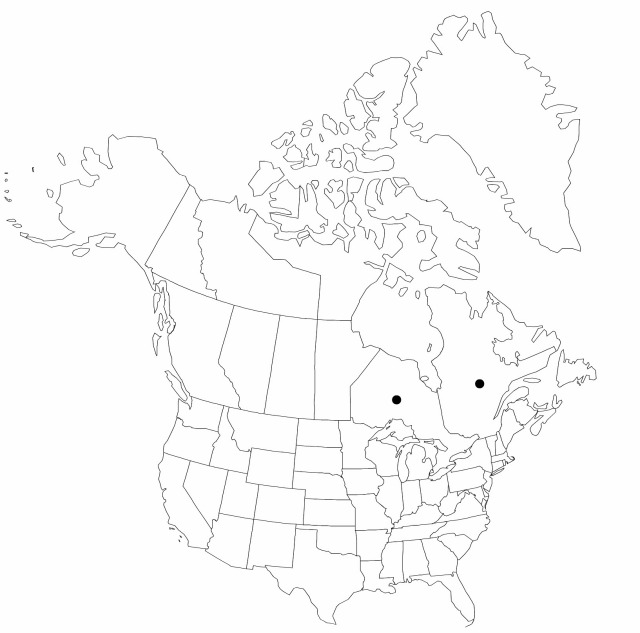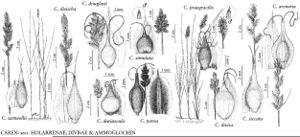Carex disticha
Fl. Angl., 347. 1762.
Culms trigonous, scabrous-angled distally, 30–120 cm; vegetative culms somewhat taller. Leaves: basal sheaths brown; sheaths with inner band green, veined, apex hyaline, prolonged 0.7–3 mm; glabrous; ligules 1.8–16 mm; blades 1.8–5.2 mm wide. Inflorescences contracted near middle, 2–7 cm; spikes ascending, ovate, 4–16 × 1.2–9 mm, basal spikes larger than those near middle. Pistillate scales reddish brown at maturity, hyaline margins very narrow or absent, ovate, acute to acuminate, glabrous. Staminate scales reddish brown, narrowly ovate, apex acute to acuminate, glabrous. Perigynia (3.8–)4–5.5(–6.1) × 1.7–2.3 mm; beak (0.8–)1–1.9(–2.3) mm. Achenes brown.
Phenology: Fruiting Jun–Jul.
Habitat: Wet meadows, stream banks, disturbed areas
Elevation: 30–200 m
Distribution

Introduced; Ont., Que., Eurasia.
Discussion
The Eurasian Carex disticha, thus far still a sporadic introduction, has been collected at two sites in Canada, both associated with ports on the Great Lakes-St. Lawrence system. A specimen to confirm a third, older report from near Belleville, Ontario, also on the Great Lakes, could not be located and verified (P. M. Catling et al. 1988).
Selected References
None.
